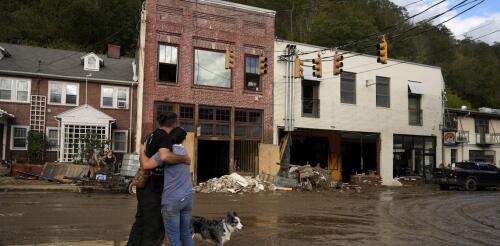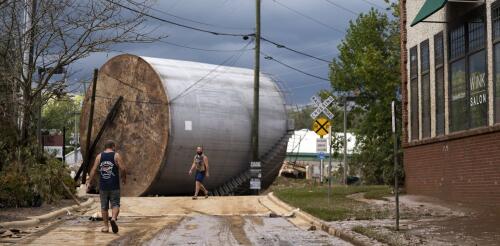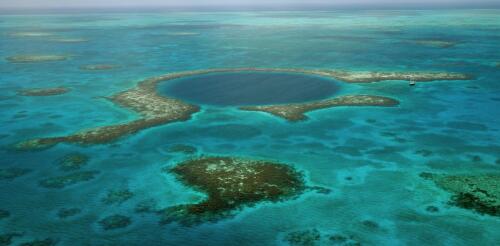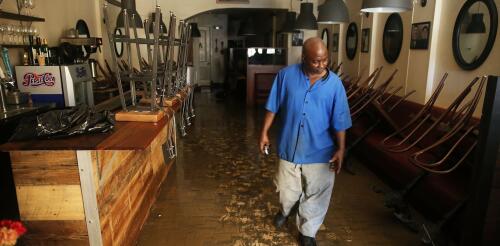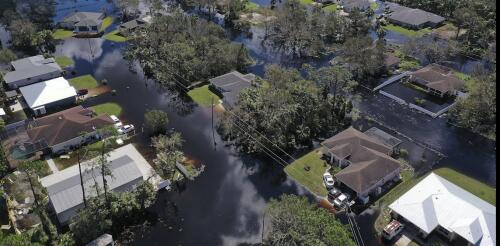Hurricane
Some hurricanes are remembered for their wind damage or rainfall. Others for their coastal flooding. Hurricane Helene was a stew of all of that and more. Its near-record-breaking size, storm surge, winds and rainfall together turned Helene into an almost unimaginable disaster that stretched more than 500 miles inland from the Florida coast. At least 230 people died across Florida, Georgia, South Carolina, North Carolina, Tennessee and Virginia as Helene flooded towns, destroyed roads and bridges and swept away homes. In Florida, Helene’s storm surge caused damage along hundreds of miles of coast. As residents there cleaned up debris, another dangerous hurricane was headed their way. Some of the same areas hit hard by Helene on Sept. 26, 2024 – including Tampa Bay and Cedar Key – were forecast to see more flooding and an even higher storm surge in Tampa Bay from Hurricane Milton, expected to make landfall as early as Oct. 9. The majority of Helene’s vic...
Hundreds of industrial facilities with toxic pollutants are in Hurricane Milton’s path as it heads toward Florida, less than two weeks after Hurricane Helene flooded communities across the Southeast. Milton, expected to make landfall as a major hurricane late on Oct. 9, is bearing down on boat and spa factories along Florida’s west-central coast, along with the rubber, plastics and fiberglass manufacturers that supply them. Many of these facilities use tens of thousands of registered contaminants each year, including toluene, styrene and other chemicals known to have adverse effects on the central nervous system with prolonged exposure. Farther inland, hundreds more manufacturers that use and house hazardous chemicals onsite lie along the Interstate 4 and Interstate 75 corridors and their feeder roads. And many are in the path of the storm’s intense winds and heavy rainfall. Black dots indicate facilities in EPA’s...
If you look back at the history of Atlantic hurricanes since the late 1800s, it might seem hurricane frequency is on the rise. The year 2020 had the most tropical cyclones in the Atlantic, with 31, and 2021 had the third-highest, after 2005. The past decade saw five of the six most destructive Atlantic hurricanes in modern history. Then a year like 2022 comes along, with no major hurricane landfalls until Fiona and Ian struck in late September. The Atlantic hurricane season, which ended on Nov. 30, had eight hurricanes and 14 named storms. It’s a reminder that small sample sizes can be misleading when assessing trends in hurricane behavior. There is so much natural variability in hurricane behavior year to year and even decade to decade that we need to look much further back in time for the real trends to come clear. Fortunately, hurricanes leave behind telltale evidence that goes back millennia. Two thousand years of this evidence indicates that the Atlantic has experie...
How a community recovers after a disaster like Hurricane Ian is often a “chicken and egg” question: Which returns first – businesses or households? Businesses need employees and customers to be able to function. Households need jobs and the services businesses provide. As an urban planning researcher who focuses on housing recovery after disasters, I have found in my research that they’re mutually dependent. However, in coastal communities, the recovery of tourism-based businesses like restaurants and hotels depends in large part on the return of affordable housing for employees. Rockport, Texas, where Hurricane Harvey made landfall in 2017, is an example of the challenge. It’s a small community that caters to vacationers and sport fishermen, including celebrities like country singer George Strait, who filmed an ad campaign in 2018 urging tourists to return to Rockport. Drawing tourists isn’t easy without fully functioning restaurants and hot...
Hurricane Ian’s widespread damage is another disaster for Florida’s already shaky insurance industry. Even though home insurance rates in Florida are nearly triple the national average, insurers have been losing money. Six have failed since January 2022. Now, insured losses from Ian are estimated to exceed US$40 billion Hurricane risk might seem like the obvious problem, but there is a more insidious driver in this financial train wreck. Finance professor Shahid Hamid, who directs the Laboratory for Insurance at Florida International University, explained how Florida’s insurance market got this bad – and how the state’s insurer of last resort, Citizens Property Insurance, now carrying more than 1 million policies, can weather the storm. What’s making it so hard for Florida insurers to survive? Florida’s insurance rates have almost doubled in the past five years, yet insurance companies are still losing money for three main reasons....
